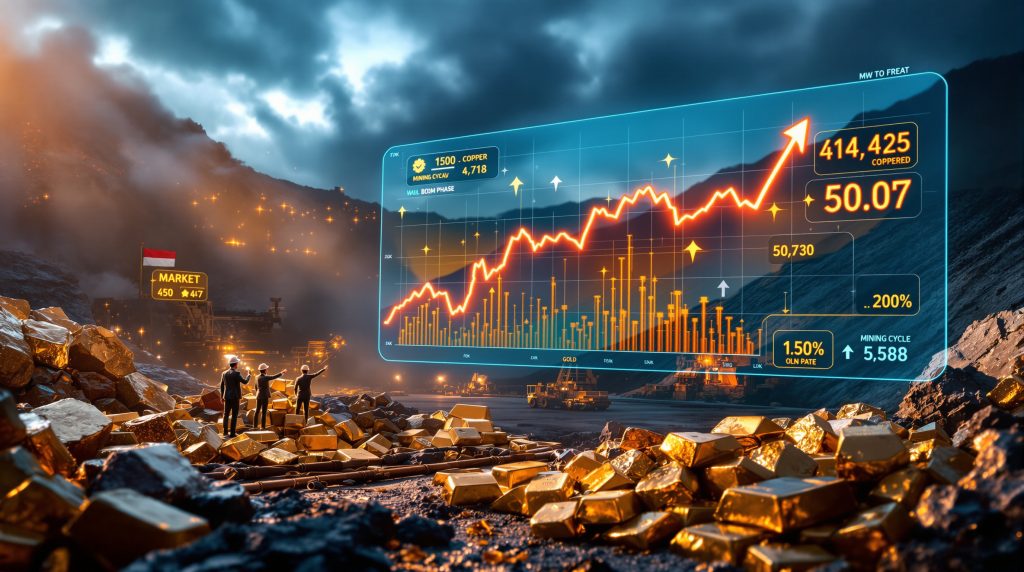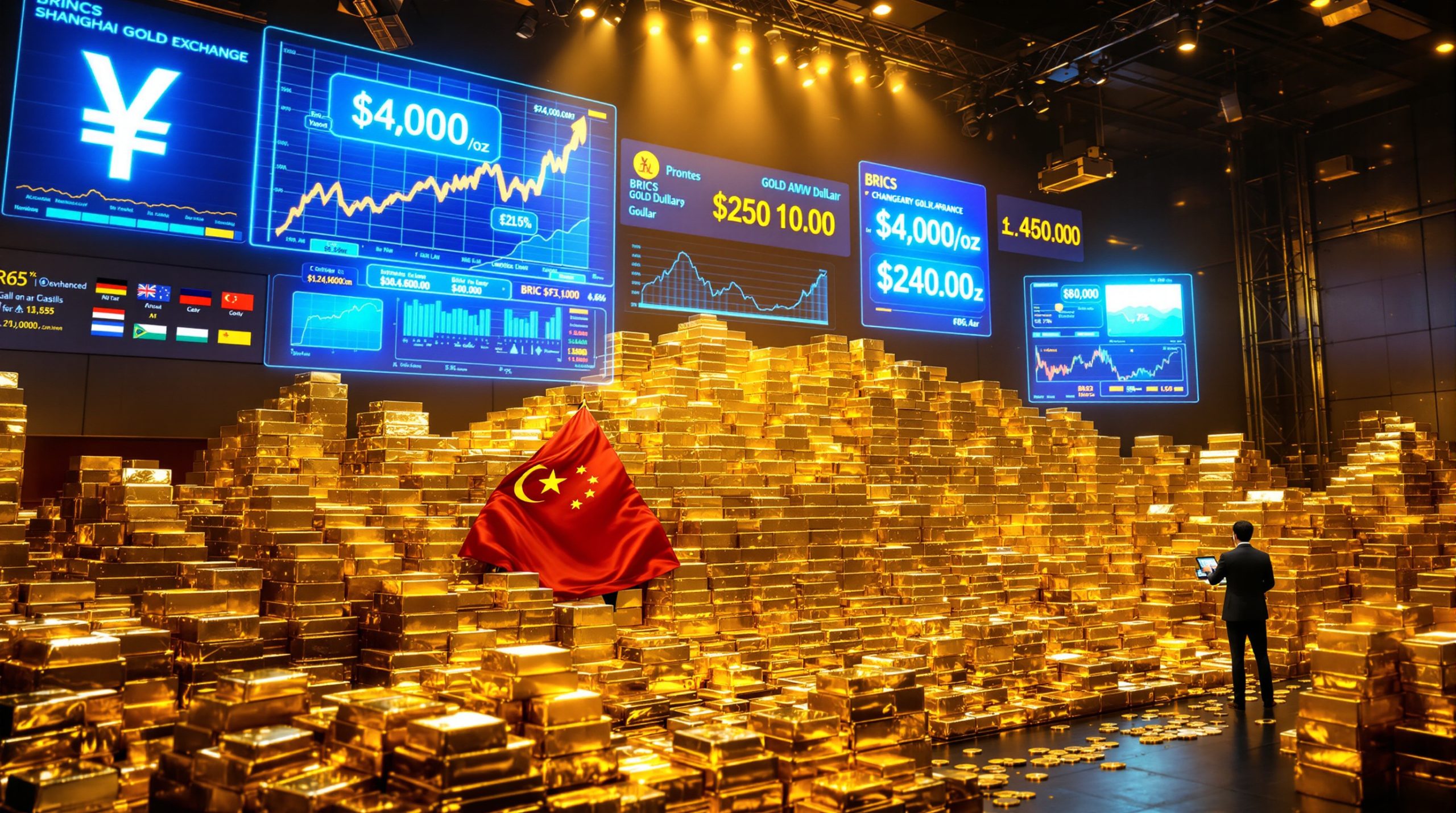What Triggers a Copper Supply Disruption and Why Does It Matter?
Copper supply disruption is an event that can rapidly shake global commodity markets and investment sentiment. Its significance is tied to copper's foundational role in energy, construction, manufacturing, and tech. Understanding why these disruptions matter unveils the intricate network of triggers and far-reaching market consequences.
How Do Global Events and Mining Operations Impact Copper Supply?
Copper faces unique vulnerabilities stemming from how and where it is produced. A combination of political, operational, and natural risks means output can be abruptly interrupted by a single incident. Recent history supplies a powerful demonstration:
- In September 2025, the Grasberg mine in Indonesia—one of the world's largest copper producers—experienced a significant operational halt.
- This event alone triggered an immediate 4% spike in global copper prices.
- The sudden halt exposed how concentrated supply chains amplify the impact when one major asset falters.
Aside from operational pauses, copper mining is sensitive to:
- Geopolitical tensions – Regulatory changes, civil unrest, or export controls can choke supply.
- Climate-related events – Fluctuations in rainfall, extreme weather, and energy shortages can force mines offline, especially in resource-rich but infrastructure-limited regions.
- Technical failures – Equipment breakdowns or safety incidents can stall high-grade ore extraction and processing.
A global context reinforces the point: copper demand is spread across advanced electronics, power infrastructure, and renewable energy, while the physical supply is concentrated in a handful of mega-mines. This imbalance means disruption at just one can tilt the scales worldwide.
What Chain Reaction Do Disruptions Spark Across Commodity Markets?
When copper supply is disrupted, the ripple effect is swift and multi-layered:
- Immediate price response: In September 2025, spot copper surged 4% overnight following the Grasberg halt.
- Market indices react: The Materials Index (XMJ) managed to resist a broader S&P/ASX 200 decline (which fell 0.8%) as resource equities rallied.
- Equities shift: Australian copper producers like Sandfire gained as much as 7.5% in trading the day after news broke.
- Gold's parallel surge: Uncertainty prompted investors to seek refuge in gold, pushing the precious metal to highs of approximately $3,800 USD and $5,800 AUD during the same window.
These events demonstrate that copper supply disruption is not an isolated issue; it can reshape pricing and sentiment across metals and mining, recalibrating risk and opportunity with almost no warning.
How Does Supply Turbulence Shape Investor Sentiment and Strategies?
The fallout from a copper supply disruption doesn't just affect miners and traders. Investment psychology, tactics, and sector flows all pivot sharply depending on how events unfold.
Which Investor Segments React Most to Disruption?
Investor response to copper supply shocks tends to align around divergent risk appetites:
- Institutional investors: Often move assets into gold-focused ETFs, seeking stability amidst volatility.
- Retail investors: Follow broader sentiment, with many shifting into gold producers, while others pursue opportunistic bets on junior copper explorers and small caps.
September 2025 highlighted increased investment in both gold producers and developers, reflecting a dual track: safety in bullion-focused companies and the lure of rapid growth among emerging copper miners. Explorers, in particular, benefited from rising interest and capital flows as risk appetite returned.
Does Disruption Trigger a Broader Market Rotation or Sector Boom?
Beyond short-term swings, disruptions can kickstart a larger rotation within the mining sector:
- Exploration and junior mining IPOs: Activity surges as new capital seeks exposure to high-beta plays tied to copper and gold.
- Sector sentiment: The Mining Cycle Clock, maintained by Lion Selection Group, advanced into the early 'boom phase' by September 2025—signaling the start of heightened deal activity and liquidity.
- Key signals of sector renewal include:
- Uptick in IPO and capital raising chatter
- A broader range of deals amid increased commodity price volatility
- Buoyant small-cap mining stocks
Such conditions nurture the notion of a cyclical upswing, especially when both gold and copper soar in tandem.
What Are the Global and Local Patterns in Copper Disruption Risks?
Understanding where copper supply risks are most intense heightens awareness of potential chokepoints—and the contrasting resilience of other regions.
Which Geographies and Operators Are Most Exposed to Supply Chain Shocks?
Copper production risk varies significantly. The disruptive halt at the Grasberg mine spotlighted Southeast Asia's outsized influence. By contrast, South American copper exporters face recurring but often lower-scale interruptions like transport strikes. Australia's copper operations have proven more resilient, with weather-related events so far inflicting only minor output changes.
| Region | Major Asset(s) | Recent Disruption Size | Market Impact |
|---|---|---|---|
| SE Asia | Grasberg | Production halt | +4% spot price spike |
| South America | Multiple | Transport strikes | Modest price creep |
| Australia | BHP, RIO | Weather events | Minimal so far |
The data underscores that a copper supply disruption in just a handful of high-output assets can have outsized effects on global copper supply forecast and sentiment.
What Unique Factors Leave the Global Supply Chain Vulnerable?
Copper's global supply chain is uniquely exposed due to several interlocking features:
- Heavy reliance on mega-projects: The world's largest producers, like Grasberg, Chile's Escondida, or Peru's Antamina, dominate total global output. Disruptions at these hubs produce instant ripple effects.
- Limited alternatives: Substituting copper in industrial or energy applications is technologically challenging and economically impractical in the short term.
- Delayed supply response: New copper projects face extended timelines (often exceeding 7 years) from exploration through permitting, financing, construction, and ramp-up. This lag means current supply disruptions are rarely mitigated by rapid new output growth.
These vulnerabilities illustrate why the market remains sensitive to even minor disturbances in copper supply chains.
What Lessons and Strategies Can Resource Investors Apply?
Copper supply disruption creates both risk and opportunity. Investors who recognize and adapt to these patterns can outperform during turbulent cycles.
How Can Investors Navigate Commodity Market Turbulence?
Effective navigation involves:
- Diversification: Balancing gold, which offers defensive stability, with copper, attractive for cyclical growth.
- Monitoring sentiment tools: Sector barometers like the Mining Cycle Clock provide early warning of shifts from downturn to boom.
- Exposure to juniors and mid-tiers: Participating in rising cycles though well-positioned small- and mid-cap copper and gold stocks, which tend to outperform as capital flows return.
What Are the Leading Indicators of a Prolonged Rally or Correction?
Astute investors watch for clear signals suggesting that a rally could persist—or reverse. Key indicators include:
- Steadily rising capital inflows into sector-specific ETFs and managed funds
- An uptick in exploration deals, corporate mergers, and resource IPO activity
- Persistent macroeconomic or geopolitical uncertainty, which sustains demand for safe-haven commodities
While none of these alone guarantee a sustained rally, their convergence often marks the start of multi-quarter outperformance for resource stocks. Understanding copper price predictions can also help investors time their market entries effectively.
Frequently Asked Questions: Copper Supply Disruptions
How Often Do Major Copper Supply Disruptions Occur?
Major copper supply disruptions are relatively rare—especially those impacting the world's top five producing mines. Yet when they do occur, the knock-on effect on prices is typically rapid and significant. The US copper production overview highlights how even stable regions can face unexpected challenges.
What Is the Usual Duration and Recovery Time for a Disrupted Major Mine?
Recovery depends on what drives the outage. Labor strikes or political protests may resolve in under a week, while technical failures or regulatory issues can suspend production for several months. Severe weather or environmental challenges might mean even lengthier downtimes.
How Quickly Do Markets Price in Disruptions?
Market responses to supply shocks are typically immediate. Spot prices and producer equity values usually adjust within hours of a confirmed incident, reflecting the market's sensitivity to supply uncertainty, as highlighted in recent copper price spikes.
Conclusion: Is the Resources Sector Entering a New Uptrend Cycle?
Events in September 2025 demonstrate the unpredictable yet pivotal influence of copper supply disruption on both global pricing and investor behavior. Despite shocks like the Grasberg halt, the broader sector revealed resilience—bolstered by robust fundamentals, proactive investor adjustments, and a visible appetite for new listings and capital raises.
Whether this marks the sustained start of a new uptrend cycle hinges on macroeconomic direction, the ability of supply chains to absorb future shocks, and investor willingness to embrace opportunity amid uncertainty. The alignment of gold as a safe haven and copper as a growth engine suggests the potential for multi-metal sector strength in the periods ahead. Prudent portfolio diversification, careful sentiment monitoring, and appropriate copper investment strategies may turn present volatility into enduring advantage.
Further Exploration:
Readers looking for ongoing analysis and in-depth perspective on global resources markets can explore more at White Noise Communications' Insights and follow Grasberg mine updates which continue to shape market dynamics.
Want to Catch the Next Major Mineral Discovery?
Discover why transformative mining discoveries can generate extraordinary returns by exploring Discovery Alert's dedicated discoveries page, where their proprietary Discovery IQ model provides real-time alerts on significant ASX mineral announcements, giving you the market edge before others catch on.




